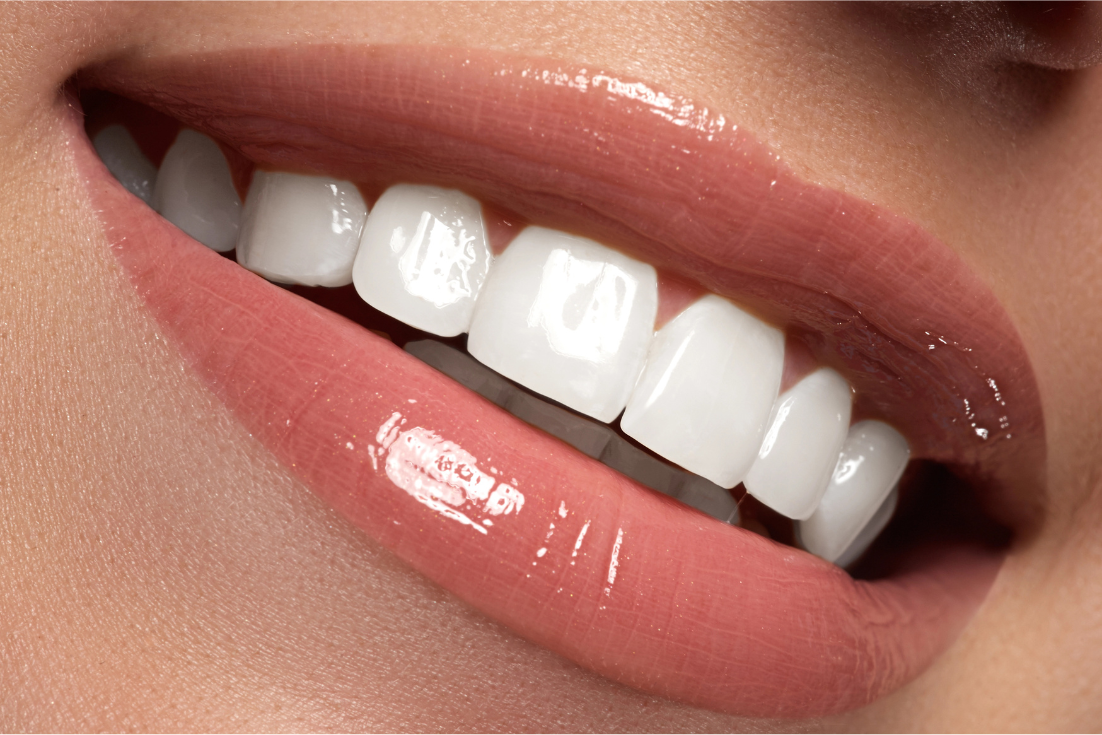Crowns vs. Veneers vs. Bridges: Which Dental Solution Is Right for You?
Among the most common and effective dental treatment options to restore your smile are crowns, veneers, and bridges. However, for many curious, would-be patients, the distinctions between these procedures can be confusing.
Dental crowns, veneers, and bridges all help improve the appearance and function of teeth, but they serve very different purposes.
Read on to find out more about these differences and what each dental restoration involves, its primary uses, and pros and cons. By the end, you'll have a clearer idea of which option might be the best fit for your specific situation.
What Are Dental Crowns?
A dental crown, often referred to as a "cap," is a custom-made covering that completely encases the entire visible portion of a tooth, from the gum line up. Crowns restore a tooth's strength, shape, size, and appearance and are commonly used for:
● Protecting damaged or decayed teeth
● After root canal treatment
● Restoring a broken or severely worn tooth
● Covering a dental implant
● Improving the appearance of a discolored or misshapen tooth
What Are Dental Crowns Made Of?
Dental crowns are crafted with the following materials:
Porcelain - Offers excellent aesthetics, closely matching the color of natural teeth. It's a popular choice for front teeth.
Zirconia - Extremely strong and durable, with a natural, tooth-like appearance. It's often favored for back teeth due to its resilience.
Metal (e.g., gold alloys) - Highly durable and resistant to fracture, though their metallic color makes them less aesthetic for visible teeth.
Porcelain-fused-to-metal (PFM) - Combines the strength of metal with the aesthetics of porcelain.
Pros of Dental Crowns:
● Strength and protection for compromised teeth
● Last 10-15 years or more with proper care
● Restore full chewing function
● Can improve the appearance of severely damaged teeth
Cons of Dental Crowns:
● Require significant tooth preparation (reduction of tooth structure)
● Can be more expensive than fillings
● May cause temporary tooth sensitivity
What Are Dental Veneers?
Veneers are thin, custom-made shells of tooth-colored material, typically porcelain, that are bonded to the front surface of teeth. Unlike crowns, veneers only cover the visible front part of the tooth and are primarily used for cosmetic enhancement.
Ideal candidates for veneers have healthy teeth with minor cosmetic imperfections and good oral hygiene. Veneers are typically used to address:
● Discoloration
● Minor chips or cracks
● Gaps between teeth
● Minor misalignment or unevenness
● Irregularly shaped teeth
What Are the Two Main Types of Veneers?
Porcelain Veneers - Made in a dental lab, porcelain veneers are highly durable, stain-resistant, and mimic the light-reflecting properties of natural tooth enamel, offering superior aesthetics. They require two or more appointments.
Composite Veneers - Made from a tooth-colored resin material, these are applied directly to the tooth and sculpted by the dentist in a single visit. They are generally less expensive but may be less durable and more prone to staining than porcelain.
Pros of Dental Veneers:
● Dramatic smile transformation for cosmetic concerns
● Require less tooth reduction than crowns
● Highly stain-resistant (porcelain)
● Relatively quick procedure
Cons of Dental Veneers:
● Not suitable for severely damaged or decayed teeth
● Irreversible, as enamel is removed
● More fragile than crowns and may chip or break
● Generally not covered by dental insurance if purely cosmetic
Also Read: Correcting Crooked Teeth with Veneers
What Are Dental Bridges?
A dental bridge is a fixed dental restoration used to replace one or more missing teeth by "bridging" the gap between existing teeth. One or more artificial teeth (pontics) are held in place by dental crowns placed on the natural teeth or implants on either side of the gap.
Dental bridges are used to replace one or more missing teeth in a row, and the health of the supporting teeth and surrounding gum tissue is crucial for their success and longevity. Types of bridges include:
● Traditional Bridges: The most common; crowns are placed on natural teeth adjacent to the gap, and the pontic (artificial tooth) is suspended between them.
● Cantilever Bridges: Used when there are adjacent teeth on only one side of the missing tooth. The pontic is supported by crowns on only one side.
● Maryland Bonded Bridges: A metal or porcelain framework bonded to the back of the adjacent teeth, rather than crowns, these are more conservative but weaker than traditional bridges.
● Implant-Supported Bridges: Instead of using natural teeth for support, these bridges are anchored by dental implants for stability and to prevent bone loss.
Pros of Dental Bridges:
● Effectively replace missing teeth, restoring chewing function and aesthetics
● Prevent remaining teeth from shifting
● Non-removable (fixed), unlike dentures
● Less invasive than dental implants (if not implant-supported).
Cons of Dental Bridges:
● Require preparation (grinding down) of healthy adjacent teeth for traditional bridges
● Won’t prevent bone loss in the area of the missing tooth unless it is implant-supported
● May need replacement every 5-15 years
● Cost varies significantly depending on type and materials
Also Read: A Guide to Implant-Supported Bridges
Key Differences Between Crowns, Veneers, and Bridges
1. Primary Function
○ Crowns: Restorative (strength, protection, shape)
○ Veneers: Cosmetic (aesthetics, surface imperfections)
○ Bridges: Tooth Replacement (fills the gap from missing teeth)
2. Tooth Coverage
○ Crowns: Covers the entire visible tooth
○ Veneers: Covers only the front surface of the tooth
○ Bridges: Replaces missing teeth, crowns on adjacent teeth
3. Tooth Preparation
○ Crowns: Significant reduction of tooth structure
○ Veneers: Minimal enamel removal (front surface only)
○ Bridges: Reduction of adjacent teeth (for traditional)
4. Ideal Use
○ Crowns: Damaged, decayed, post-root canal, fractured
○ Veneers: Discolored, chipped, gapped, minor crookedness
○ Bridges: Replacing 1+ missing teeth
5. Longevity
○ Crowns: 10-15+ years
○ Veneers: 10-15 years (porcelain)
○ Bridges: 5-15 years
6. Bone Preservation
○ Crowns: Yes (for the crowned tooth)
○ Veneers: Yes (for the veneered tooth)
○ Bridges: No (for missing tooth area, unless implant-supported)
7. Cost
○ Crowns: Varies by material, typically $ 800 - $3,000+ per tooth
○ Veneers: Varies by material, typically $900 - $2,500+ per tooth
○ Bridges: Varies by type/material, typically $2,000 - $5,000+
8. Insurance Coverage
○ Crowns: Often covered
○ Veneers: Rarely covered
○ Bridges: Often covered
Note: Costs are general estimates that vary significantly based on location, provider, and complexity.
How to Choose the Right Option for Your Smile
Selecting the right dental solution for your smile requires careful consideration of several factors and, most importantly, a personalized consultation with a trusted dental professional. Here are the factors to consider:
Tooth Condition
If your tooth is severely damaged, extensively decayed, fractured, or has undergone a root canal, a crown is likely the best choice for strength and protection.
If your tooth is healthy but has cosmetic imperfections like discoloration, minor chips, or slight misalignment, veneers are a good option.
If you have one or more missing teeth, a bridge can fill the gap.
Aesthetic Goals
If your primary goal is a dramatic cosmetic transformation of healthy but imperfect front teeth (e.g., changing color, shape, or closing small gaps), veneers are ideal.
While restorative, modern best dental crowns (especially porcelain or zirconia) can also provide excellent aesthetic improvements for damaged teeth.
Bridges will restore the appearance of missing teeth, but their primary goal is functional replacement.
Budget
While veneers and crowns are priced per tooth, bridges are priced per unit (crowns + pontics). It's important to discuss the full cost breakdown with your dentist and inquire about dental implant payment plans or insurance coverage.
Remember that while some options may have a lower upfront cost, their longevity and need for future replacement can impact long-term expenses.
Oral Health Status
The overall health of your gums and surrounding teeth is critical for any dental restoration. Conditions like gum disease must be treated before any cosmetic or restorative procedures. For bridges, the health and strength of the adjacent supporting teeth are paramount.
Dental Crowns, Veneers & Bridges in Woodland Hills
In the world of modern dentistry, dental crowns, veneers, and dental bridges each serve a unique purpose. Crowns are the champions of strength and protection for compromised teeth. Veneers are the artists of aesthetic transformation for healthy but imperfect smiles. And bridges are the reliable workhorses for replacing missing teeth, restoring both function and appearance.
To see if dental crowns, veneers, or bridges are right for you, schedule an appointment today at Woodland Hills Dental Care.


